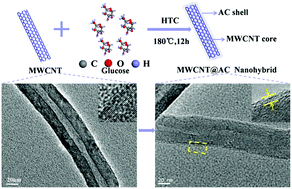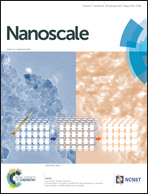Gigantic enhancement in the dielectric properties of polymer-based composites using core/shell MWCNT/amorphous carbon nanohybrids
Abstract
Novel core/shell structured multi-walled carbon nanotube/amorphous carbon (MWCNT@AC) nanohybrids were successfully prepared using a simple and novel method. Subsequently, the MWCNT@AC nanohybrids were used as fillers to enhance the dielectric properties of poly(vinylidene fluoride) (PVDF) based composites. It is found that the dielectric constant of the MWCNT@AC/PVDF composites can reach 5910 (the dielectric loss is ∼2), which is considerably better than that of MWCNT/PVDF composites. The uniform amorphous carbon shell provides an insulative layer between adjacent MWCNTs in the polymer matrix, which not only prevents the direct contact of MWCNTs but also improves the dispersibility of the MWCNTs. Therefore, a surprising number of microcapacitors could be formed in the composites before the formation of a conductive network, leading to a gigantic enhancement in the dielectric properties. Our strategy provides a new approach to fabricate excellent dielectric materials for energy storage capacitors. In addition, the design concept used in this work can be extended to other carbon materials.


 Please wait while we load your content...
Please wait while we load your content...